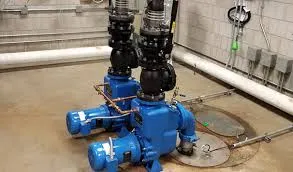Occitan
- Afrikaans
- Albanian
- Amharic
- Arabic
- Armenian
- Azerbaijani
- Basque
- Belarusian
- Bengali
- Bosnian
- Bulgarian
- Catalan
- Cebuano
- Corsican
- Croatian
- Czech
- Danish
- Dutch
- English
- Esperanto
- Estonian
- Finnish
- French
- Frisian
- Galician
- Georgian
- German
- Greek
- Gujarati
- Haitian Creole
- hausa
- hawaiian
- Hebrew
- Hindi
- Miao
- Hungarian
- Icelandic
- igbo
- Indonesian
- irish
- Italian
- Japanese
- Javanese
- Kannada
- kazakh
- Khmer
- Rwandese
- Korean
- Kurdish
- Kyrgyz
- Lao
- Latin
- Latvian
- Lithuanian
- Luxembourgish
- Macedonian
- Malgashi
- Malay
- Malayalam
- Maltese
- Maori
- Marathi
- Mongolian
- Myanmar
- Nepali
- Norwegian
- Norwegian
- Occitan
- Pashto
- Persian
- Polish
- Portuguese
- Punjabi
- Romanian
- Russian
- Samoan
- Scottish Gaelic
- Serbian
- Sesotho
- Shona
- Sindhi
- Sinhala
- Slovak
- Slovenian
- Somali
- Spanish
- Sundanese
- Swahili
- Swedish
- Tagalog
- Tajik
- Tamil
- Tatar
- Telugu
- Thai
- Turkish
- Turkmen
- Ukrainian
- Urdu
- Uighur
- Uzbek
- Vietnamese
- Welsh
- Bantu
- Yiddish
- Yoruba
- Zulu
Telephone: +86 13120555503
Email: frank@cypump.com
Dec . 31, 2024 00:16 Back to list
Understanding the Function and Importance of a Septic Ejector Pump in Waste Management
Understanding Septic Ejector Pumps Essential Components for Wastewater Management
Septic ejector pumps play a crucial role in the functionality of septic systems, especially in areas where gravity cannot effectively move wastewater. They are designed to eject wastewater from a septic tank or holding tank to a higher elevation or to a drain field, ensuring proper sewage management and protecting the environment. This article will explore the importance, functionality, and maintenance of septic ejector pumps.
What is a Septic Ejector Pump?
A septic ejector pump, often referred to simply as an ejector pump, is a type of submersible pump that is used primarily in septic systems. Its main function is to pump wastewater or effluent from the holding tank to a designated location where it can be further treated or dispersed, typically to a drain field. Ejector pumps are commonly used in locations with challenging topography or where the septic tank is at a lower elevation than the drain field.
How Do Septic Ejector Pumps Work?
Ejector pumps are activated through a float switch, which detects the level of wastewater in the holding tank. When the water reaches a certain level, the float switch triggers the pump to turn on. The pump then uses a motor to create pressure, pushing the sewage upward through a discharge pipe to the drain field or another treatment facility. After the pump has successfully emptied the tank, the float switch will turn the pump off, ensuring it operates only when necessary.
There are primarily two types of ejector pumps the simplex pump and the duplex pump. A simplex ejector pump consists of a single pump and is generally used in residential applications. A duplex ejector pump, on the other hand, has two pumps and is often used in commercial applications or in homes with higher wastewater demands, providing backup in case one pump fails.
Installation and Considerations
septic ejector pump

When installing a septic ejector pump, several factors must be considered to ensure it operates efficiently. The size of the pump is crucial; it needs to be appropriately matched to the volume of wastewater it will be handling and the height to which it must pump the water. Additionally, the type of sewage, the distance to the discharge point, and local regulations must all be taken into account during installation.
Professional installation is often recommended due to the complexities involved in setting up a septic system. Proper arrangement of pipes, the angle of discharge, and adequate venting are necessary to prevent issues such as backflow or blockages.
Maintenance of Septic Ejector Pumps
Regular maintenance of ejector pumps is essential to ensure their longevity and efficiency. Homeowners should perform routine inspections to check for unusual noises, and vibrations, or if the pump is running continuously. Clogs can occur due to foreign objects in the tank or buildup of debris, so periodic cleaning and inspections can help prevent malfunctions.
In addition to inspections, it is advisable to follow a regular pumping schedule for the septic tank itself. Most septic tanks should be pumped every three to five years, depending on the size of the tank and the number of occupants in the household. Keeping the septic tank in optimal condition reduces strain on the ejector pump.
Conclusion
Septic ejector pumps are essential components of an effective sewage management system, particularly in challenging terrains. By understanding how these pumps operate, the importance of proper installation, and the need for regular maintenance, homeowners can ensure their septic systems function smoothly. Investing in a reliable ejector pump and establishing a proactive maintenance routine can lead to significant long-term benefits, contributing to the overall health and safety of the environment.
-
High-Efficiency Submersible Effluent Pump for Sewage & Wastewater Solutions
NewsJul.08,2025
-
High Quality CH Warman Slurry Pump Factory - Leading Horizontal Slurry Pump Supplier
NewsJul.08,2025
-
Hot Sale Chemical Circulating Pump – Efficient & Durable Slurry Circulating Pump Solutions
NewsJul.08,2025
-
High-Efficiency Submersible Dredge Pump for Sand & Gravel Durable Dredge Slurry Pumps Solutions
NewsJul.07,2025
-
Wholesale Slurry Pump Impeller Supplier – High-Quality & Efficient Pump Parts for Enhanced Performance
NewsJul.07,2025
-
High-Efficiency Water Submersible Pumps Reliable Water Pump for Potable Water Supply
NewsJul.06,2025










